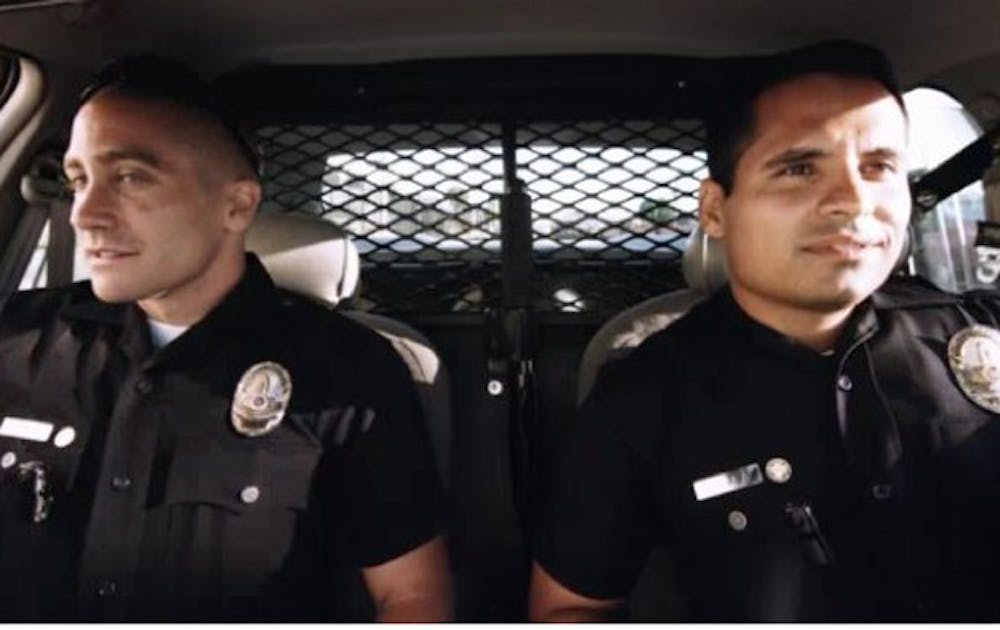David Ayer, the director of Training Day, returns to the police-drama genre with his newest film End of Watch. The film chronicles the patrols of two LAPD officers, Brian Taylor (Jake Gyllenhaal) and Mike Zavala (Michael Peña), who become entangled in the workings of drug cartels.
The movie focuses primarily on Brian, an ex-Marine turned police officer. Brian is taking a pre-law class that requires him to make a video, so much of the film is viewed through his hand-held camera. Ayer sought to imitate YouTube videos in their shaky perspective. To capture this feeling, he switches between Brian’s personal minicam and other amateur-feeling cameras: the dashboard-mounted lens in the police cruiser, mini cameras pinned to officers’ uniforms and another handheld camera wielded by cartel members. Why the cartel chooses to document their own illegal activities is never clearly explained, so their use of the camera seems like nothing more than a crutch for the filmmakers. Despite this, the jerky camera work adds to the authenticity of the plot and improves the audience’s connection to the film.
The main characters add a different dimension to the oft-used tale of cop duos. We often see films in which members of the police force are cast as either noble heroes or corrupt villains, but End of Watch creates a police unit of seemingly normal people. Both Brian and Mike are “good cops”—their intentions lie with upholding justice. We are also given a glimpse into the personal lives of the protagonists, which both further humanizes them while offsetting the generally serious tone of the movie. In fact, all of the officers shown in the film seem to be decent people with realistic flaws. While one policeman (David Harbour) is not the most likeable of characters, by the end of the film even he garners sympathy.
The drug dealers, with such stereotypical monikers as “Big Evil” and “Lord of the South,” are not given the same courtesy. Their characters have no depth and are depicted as purely villainous; the cartel is only ever shown in the most grisly of situations. Thanks to the less-than-ideal abilities of the hand-held cameras to capture low-light situations, much of the gore is implied rather than seen. This ensures that the violence does not become an overpowering distraction from the main plot of the film.
The physical intensity escalates throughout the film, progressing from a simple drive-by between gangs to an attack on two police officers to the movie’s abrupt climatic ending. The film combines many of the elements traditionally associated with action films, like high speed chases and countless rounds of ammunition. But End of Watch provides more than just high-tempo action sequences: it creates authentic emotional connections.
Get The Chronicle straight to your inbox
Signup for our weekly newsletter. Cancel at any time.

